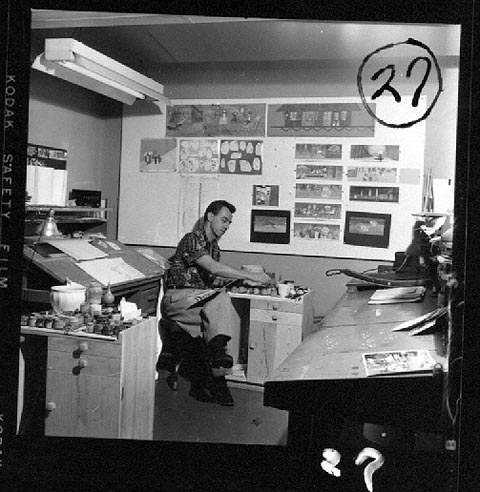
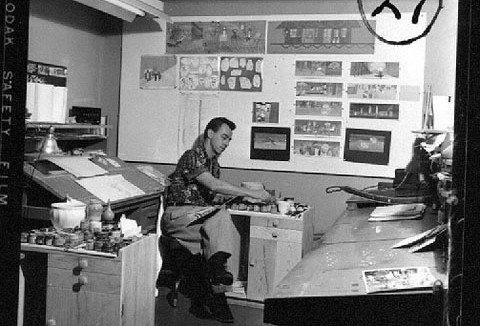
Bob McIntosh, R.I.P.

Bob McIntosh passed away on June 17, 2010 at the age of 94. Born on March 11, 1916 in Vallejo, California, and raised in Stockton, Bob discovered painting at an early age. Encouraged by Harry Noyes Pratt, the director of Stockton’s then-newly opened Haggin Museum, and mentored by local painter Arthur Haddock, McIntosh applied for a scholarship to Art Center in Los Angeles. He moved with his family to LA in 1934 to attend the school, and afterwards was hired at Disney where he worked on a number of the studio’s features, including Bambi for which he painted multiplane backgrounds directly onto glass. He was drafted into the First Motion Picture Unit during WWII. Following the war, he joined Paul J. Fennell’s commercial studio Cartoon Films Ltd. where he worked on contemporary looking commercials (along with designer Ed Benedict) that prefigured the move towards cartoon modernism in the 1950s.
He joined UPA in the early-1950s and stayed there for the entire decade, primarily painting backgrounds for the Mister Magoo series. This is what I wrote about his work in Cartoon Modern: “McIntosh worked in perhaps the most simplified style of any of the UPA background painters. His ‘poster style’ background paintings used minimal rendering techniques and clean geometric shapes, recalling the work of artists like Stuart Davis and Fernand Léger.” After UPA, Bob painted backgrounds on The Alvin Show and The Lone Ranger at Format Films, George of the Jungle for Jay Ward Productions, and Chuck Jones’s The Phantom Tollbooth, among other projects, before retiring in the early-1980s.
It was a pleasure to get to know Bob while I was writing Cartoon Modern and I kept in touch with him over the last few years of his life. Bob had an admirably unwavering commitment to painting. Though his career in animation stretched over forty years, animation wasn’t his primary passion; it was painting that excited him, and animation provided a steady income allowing him to do what he loved best. He had exhibited his personal artwork since the 1940s, and his lifelong passion for painting resulted in hundreds of canvases in almost every single imaginable style. In his final years, when painting became difficult, he continued to create painted collage canvases. A wonderful life-spanning selection of his paintings can be seen at the Trigg Ison gallery website which represents his work.
Bob was an intensely private person. He never initiated contact; I always had to call him. But when I did call, he was always gracious and friendly. The half dozen or so times I visited him at his home where memorable experiences as he would speak for hours about painting and his life. Our conversations would inevitably shift back to his latest painting projects or his personal theories on painting and color. He was ever the gentleman, even in his advanced years, and dressed with class. He had a good sense of humor about himself and the world around him; whenever I asked him about events that had happened in the past, he enjoyed making jokes about his age by saying, “I think that happened in 1939…or was that 1839?” He would laugh heartily when he recalled the last name of one of his instructors at Art Center: Stan Reckless. He once showed me a collection of unused toilet paper he had gathered during a trip to Europe in the 1940s; the shortage of paper in postwar Europe gave their toilet paper a quality similar to wax paper, which had amused Bob.
Bob is one of the unsung heroes of animation; an artist who worked in the background (and on the backgrounds) while quietly raising the standards of the art form with his masterful artistry. It was a delight and an honor having known him for the short time that I did. His wife, Helen Nerbovig McIntosh, an important woman artist at Disney, preceded him in death. He is survived by his daughter Jorjana Kellaway, his grandson, Colin Kellaway, and his ninety-six year old brother, Harrison McIntosh, who is a well-known ceramicist.
Here are a few images celebrating McIntosh’s life and work:
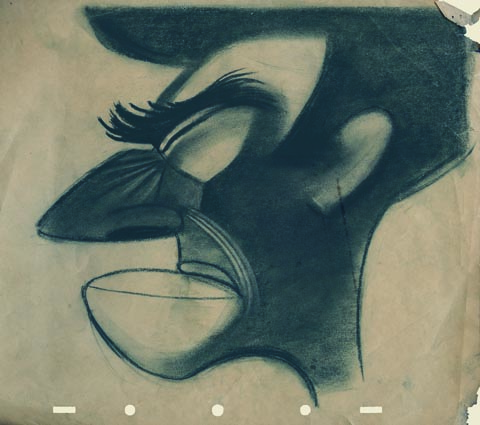
Caricature of Bob McIntosh by John Hubley while they worked together in the First Motion Picture Unit (click for larger version)
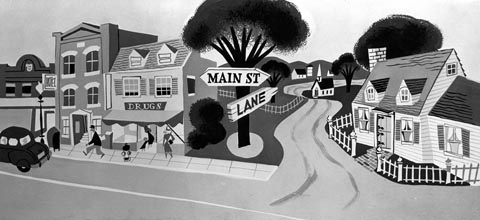
McIntosh painting for a late-1940s commercial produced at Cartoon Films, Ltd. (click for larger version)

McIntosh working at UPA ca. mid-1950s
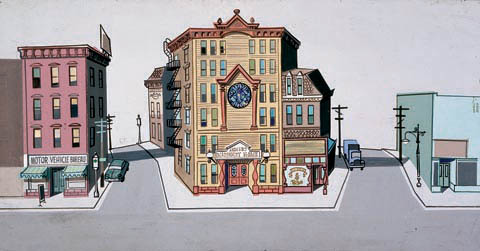
McIntosh painting for the 1953 Mister Magoo cartoon Safety Spin (click for larger version)
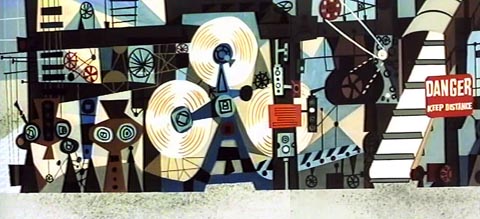
McIntosh painting for the 1955 short Magoo Makes News (click for larger version)
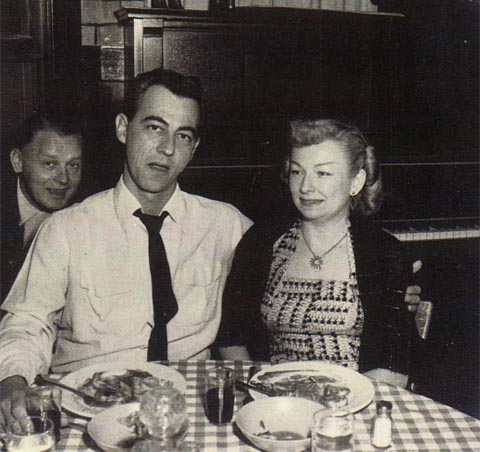
Bob McIntosh with his wife Helen Nerbovig McIntosh ca. early-1960s
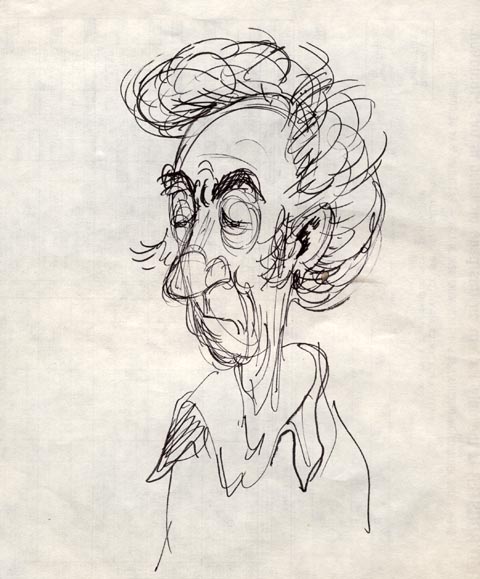
Drawing of Bob McIntosh by Mel Shaw
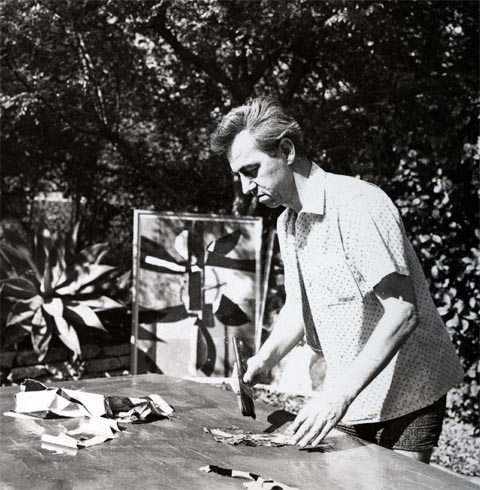
Bob McIntosh painting in his backyard
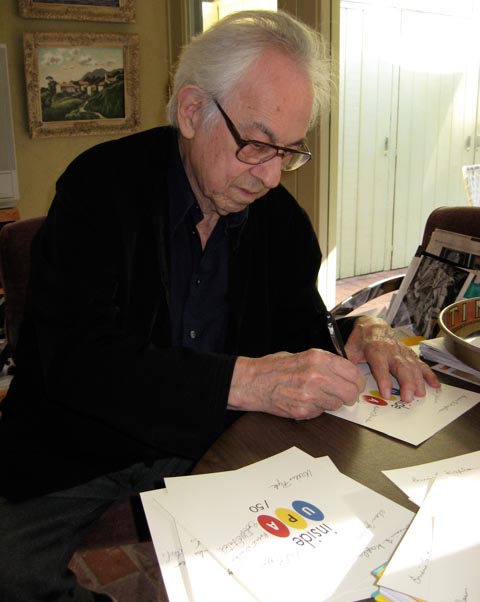
Bob McIntosh signing the inserts for the “Inside UPA” book that I edited in 2007

.png)